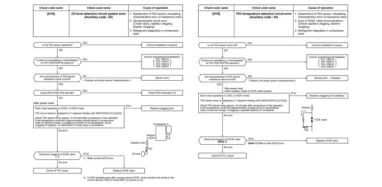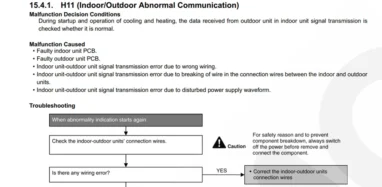The importance of foreknowledge about your intended electronic gadget cannot be overemphasized. However, I have failed to warn people about the possible difficulties they may undergo while learning about them. The first challenge people often encounter is having to deal with lots of abbreviations and cramming each component and its functions.
In my previous works, I have written a lot about the types of HVAC there is and their various components and I intend to do the same in this article. So have you ever wondered “what is a vav box in HVAC?”. Well, this review will put you out of your mystery because it contains all you have to know about the vav box of an HVAC system.
What does VAV mean in HVAC
In HVAC, VAV stands for Variable air volume and they control the flow of air through the building so that the temperature can comfortable for its occupants.
What is a VAV box
Variable air volume (VAV) is one of the various types of Heating, Ventilating, and Air conditioning system. While most other types of HVAC systems like the Constant Air Volume (CAV) work by supplying uninterrupted airflow at different temperature levels, the VAV box is a complete reverse. VAV systems work by varying the airflow at a constant level of temperature.
What is the difference between a parallel and series VAV box
A VAV box usually contains a fan which could be either a parallel flow fan-powered terminal or a series flow fan-powered terminal. These two types of fan-powered terminals may look similar ( details later on this) but are different in some ways. Here are a few differences between them.
- The fan of a parallel flow terminal is located on the outer part of the original airstream and is best operated when the primary air is down. Whereas, the fan of a series flow terminal is located inside the original airstream and is best operated uninterruptedly when the space is occupied.
- Another key difference between these two is the requirements of their inlet pressure. A parallel flow terminal needs intense inlet constant pressure for air to be forced through the casing, original air damper, downstream ductworks, and the diffusers. The ductwork and the diffusers require a resistance of 0.3″ wg. while the resistance requirement of the damper is 0.2″ wg. Therefore, in total, a parallel flow terminal requires a total of 0.5″ wg. inlet pressure.
- On the other hand, a series flow terminal uses the fan to increase the air flowing through the discharge ducts and the diffusers to allow the inlet constant pressure to control loss of air through the original air damper. And this is why a series flow terminal requires a much lesser inlet pressure. Both the central fan and the duct system require 0.1″ wg. and 0.2″ wg inlet pressure and use 0.3″ wg altogether.
- The fan of a series flow terminal operates in both occupied and unoccupied periods which usually ranges from 3000 to 4000 hours per year. While the fan of a parallel flow terminal operates best during heating periods and low-loads cooling. The operating time ranges from 500 to 2000 hours per year. Although this largely depends on the weather and some other factors.
Why are VAV boxes important for HVAC
The major importance of VAV in HVAC is that it is responsible for the heating and cooling effect of an HVAC system. Therefore, they help to keep the humidity under control and save energy consumption.
Types of VAV box in HVAC
When attempting to research the different types of VAV boxes in HVAC, I made a series of encounters that left me confused and almost completely lost connection with the answers I seek. I discovered that different writers have different names given to each of the VAV boxes.
So to avoid confusion, before I delve into details, you must know that there are two major types of VAV boxes – the single duct series and the single duct parallel VAV box. The single duct can be either fan-powered or non-fan-powered. While the single duct parallel can only be fan-powered.
Non-fan powered single duct series VAV box (cools only)
This type is a box equipped with a damper and usually connected to a primary duct that leads to an area within the building. It also has a remote thermostat attached DDC controller that controls the sensor of the discharged air temperature and the damper.
Fan-powered single duct series VAV box
The fan-powered single duct series is designed in a similar way to the Non-fan powered single duct series but with a fan attached to it and some upgraded features.
The fan-powered single duct series damper can automatically adjust between the room temperature and the preset airflow rate. This feature makes it possible for the primary air to be mixed with the plenum air. Which will ultimately lead to reduced energy consumption because in this case, residual heat is used instead of electricity.
Fan-powered single duct parallel VAV box
This is an upgraded version of the fan-powered single duct series but equipped with an electric coil which allows it to reheat the air almost immediately the primary air reaches the preset temperature. With this, the flow of air to a particular area can be regulated without affecting other areas in the same building. And this is what makes this type of VAV system ideal for offices and large residential buildings.
What is the use of VAV in an HVAC system
An HVAC system is an essential feature of a building because they make living comfortably for us. A system is a group of components working together to achieve a goal. The VAV box is an important component of an HVAC system and it is used majorly to regulate the flow of air to a particular area so that the room temperature does not rise or drop below the tolerant level.
How does the VAV of an HVAC system work
There are different types of VAV, but their systems work in similar ways. This section will help you with all you need to know about how VAV works.
Thermostat and control
Variable Air Box (VAV) is a sheet metal box containing a damper and controls located in a control panel. The thermostat is connected to the controller and it is used to regulate the damper so that the airflow and temperature do not rise or drop below programmed standards. The VAV box does this by opening the damper when the room temperature is rising above the preset standard and closing it when the temperature drops below set the standard. Primarily the airflow from the principal VAV air handler passes through the original duct system and then the air is distributed by the VAV box to the auxiliary duct system.
Heat generation
The VAV box generates heat by utilizing electricity or sometimes through a hot water coil. The thermostat and the controller are also used to control the level of heat that is being generated. The heat will automatically turn on whenever the room temperature drops below the setpoint and vice versa.
CAV vs VAV HVAC system
Both Constant air volume (CAV) and Variable air volume are types of HVAC systems. Hence, most homeowners love to weigh their options before finally deciding between the available alternatives. Therefore, in this section, the qualities of the two HVAC systems will be compared against each other.
Constant air volume system (CAV)
CAV is an HVAC system that allows a constant supply of airflow with a varying supply of air temperature.
Qualities of a CAV system
- The fan and the compressor operate at full capacity unless the temperature drops to a level below the default setting. When this happens, the compressor will automatically turn off.
- Originally, the CAV system is usually small and is best used for a singular thermal. However, we now have upgraded versions that can serve multiple purposes. Examples include CAV multi zones, CAV with reheat, CAV primary/secondary systems, etc.
- CAV system is of two major types, namely; Thermal reheat system and Mixed air system.
Variable air volume system (VAV)
Variable air volume is a type of HVAC system that supplies varying airflow at a constant temperature.
Qualities of Variable air volume
- They are purposely designed to maintain a balance between the need for heat and coolness.
- It is one of the best alternatives for dehumidifying.
- It can be used in multiple areas.
- It is energy efficient.
Is VAV more efficient than the CAV HVAC system
Yes, VAV is more efficient than the CAV system. Compared to CAV, VAV requires a relatively low rate of airflow to function and as a result, it consumes less energy for heating and cooling. Therefore, anyone who uses VAV will pay fewer electricity bills.
How long does it take to install a VAV box in an HVAC system
VAV installation should be completed within 3 and a half hours. This is when the job is done by one person and works without any interruption.
How to install VAV box in the HVAC system
Installation of the VAV box in the HVAC system a simple and you don’t have to be an HVAC technician before you can pull it off. Follow the simple steps below to guide you through the processes involved.
Step 1
Install the VAV controller in the VAV box
To do this;
- Set the damper in a fully opened position.
- Press the gear disconnection button and turn the V-bolt towards the same direction as the damper until the V-bolt is positioned against the stop sign.
- Make sure the controller is placed over the damper shaft and see to it that the controller is properly placed to achieve hitch-free anti-rotation.
- Place the bushing in the appropriate slot and bolt the controller using an 8 number sheet metal screw.
- Fasten both the shaft and the hub together, then power up the controller.
- Connect the ethernet patch cable to the corresponding sensor port.
- Connect the sensor of the airflow by inserting the low airflow pick up into the low port on the controller and inserting the high airflow pick up into the high port on the controller.
Step 2
Install the digital wall sensor
To do this;
- Fix the sensor black plate directly above the electrical box using two screws and endure that the ethernet cable passes through the midpoint of the backplate.
- Connect the cable to the sensor and place the sensor directly on the backplate.
- Tighten the sensor to the backplate using a retaining screw.
Curious to learn what is static pressure in hvac or what does MBH stand for in HVAC?


